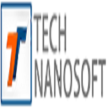What is Salesforce integration with third-party applications?
Streamlining Business Processes and Expanding Functionality with Salesforce Integration

Salesforce is a versatile CRM platform that can be further enhanced with third-party applications. This integration empowers businesses to leverage the strengths of different tools and systems, creating a unified ecosystem that streamlines processes, boosts productivity, and enhances the overall customer experience.
What is 3rd party integration in Salesforce?
Third-party integration in Salesforce refers to connecting external applications or systems with the Salesforce platform. It allows organizations to extend the functionality of Salesforce by integrating with other tools, enabling seamless data synchronization, process automation, and a holistic view of customer information.
By leveraging APIs and connecting external systems, organizations can enhance their CRM capabilities, improve data accuracy, and streamline business operations. Third-party integration in Salesforce is essential for maximizing the platform's value and creating an integrated ecosystem that drives growth and improves customer relationships.
This discussion will gather much information, like the benefits and potential use cases of Salesforce integration with other applications.
What is The Advantage of Third Party System Integration?
Third-party system integration can offer several advantages for businesses, improving communication between departments and overall productivity. Let's analyze how it can help businesses stay competitive in a rapidly evolving marketplace.
Data consolidation and validation: Integrating Salesforce with third-party applications enables seamless data flow between systems. It eliminates data silos and ensures that relevant customer information is accessible across all platforms. For example, integrating with an accounting system allows sales teams to have real-time visibility into customer financial data, facilitating more informed sales conversations and accurate forecasting.
Enhanced Customer 360 View: Businesses can gain a holistic view of customer interactions and support history by integrating Salesforce with customer support or helpdesk systems. This integration ensures that sales, service, and support teams comprehensively understand the customer's journey, enabling personalized and effective engagement.
Productivity and efficiency at work: Integrating Salesforce with productivity tools like project management or collaboration platforms allows for streamlined workflows and improved team collaboration. For instance, integrating with a project management tool enables sales teams to easily create and assign tasks, collaborate on deals, and track progress, all within the Salesforce interface.
Marketing Automation and Lead Nurturing: Integrating Salesforce with marketing automation tools enables seamless lead nurturing and campaign management. By syncing lead data and leveraging marketing automation capabilities, businesses can effectively engage leads with personalized communications, track campaign performance, and analyze ROI.
E-commerce Integration: For businesses with e-commerce operations, integrating Salesforce with e-commerce platforms can streamline order management, inventory tracking, and customer support. This integration enables a seamless data flow between sales, marketing, and e-commerce systems, ensuring accurate and timely information for effective customer service and order fulfillment.
Data analytics and reporting: Integrating Salesforce with analytics tools allows businesses to harness the power of data and gain actionable insights. By combining data from multiple sources, organizations can generate comprehensive reports, perform advanced analytics, and make data-driven decisions to drive business growth.
Challenges in Salesforce Integration with Third-Party Apps
- Compatibility: One of the main challenges in Salesforce integration with third-party apps is ensuring compatibility between the two systems. Its own APIs and data structures, and ensuring that the third-party app can communicate effectively with Salesforce and understand its data model is essential.
- Data Mapping: It often requires mapping the data fields between the two systems, which can be complex, especially when the data structures and naming conventions differ.
- Data Synchronization: Keeping data in sync between two should be reflected in the other to ensure data consistency. Handling real-time data updates and conflicts and ensuring data integrity can be complex, especially when dealing with large volumes of data.
- Security and Authentication: It requires managing security and authentication protocols that help to protect sensitive data. Managing authentication tokens, access controls, and encryption can be challenging.
- Scalability: In this process, it's essential to consider scalability. As the user base and data volume grow, the integration should be able to handle increased traffic and data processing without performance degradation. It requires careful planning and optimization to ensure the integration can scale effectively.
- Error Handling and Logging: Integration projects can encounter errors and exceptions during data transmission and processing. Logging and monitoring the integration process can also help track errors, identify bottlenecks, and ensure smooth operation.
- Upgrades and Maintenance: Salesforce regularly releases updates and new versions, and third-party apps may also change. It requires ongoing monitoring, testing, and implementation of upgrades to ensure compatibility and continued functionality.
- Cost and Resources: It can require significant resources, including development time, expertise, and potentially licensing fees for the third-party app. Considering the costs and allocating sufficient resources for the integration project is important.
- Change Management: Integration projects can impact various stakeholders, including users, administrators, and management. It involves effective communication, training, and support to help users understand and embrace the integrated solution.
- Documentation and Support: Comprehensive documentation and ongoing support are essential for successful Salesforce integration with third-party apps. Clear documentation helps developers understand the integration process, data flows, and troubleshooting steps.
Closing
Salesforce integration with third-party applications offers many benefits, empowering businesses to optimize their processes, enhance customer experiences, and drive growth. By exploring integration possibilities and leveraging the Salesforce AppExchange marketplace, businesses can tailor their CRM experience to meet their unique requirements and unlock the full potential of their customer data.
About the Creator
Technanosoft Technologies
Technanosoft Technologies is an industry expert who implements cutting-edge technologies at an affordable price.






Comments
There are no comments for this story
Be the first to respond and start the conversation.